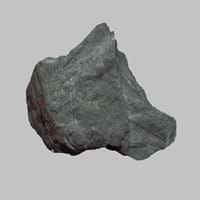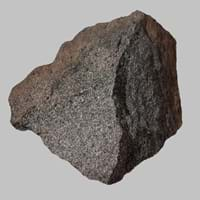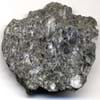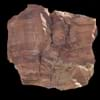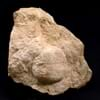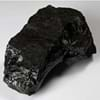Taconite and Pantellerite
Definition
Definition
Taconite is a low-grade iron ore which belongs to sedimentary rock and containing about 27% iron and 51% silica
Pantellerite is a peralkaline rhyolite. It has a higher iron and lower aluminium composition than comendite
History
Origin
Western Australia, Minnesota
Strait of sicily
Discoverer
Newton Horace Winchell
Unknown
Etymology
From the name of Taconic Mountains in New England
From Pantelleria, a volcanic island in the Strait of Sicily
Class
Sedimentary Rocks
Igneous Rocks
Sub-Class
Durable Rock, Medium Hardness Rock
Durable Rock, Hard Rock
Family
Group
Not Applicable
Volcanic
Other Categories
Coarse Grained Rock, Opaque Rock
Fine Grained Rock, Opaque Rock
Texture
Texture
Banded, Trellis
Eutaxitic
Color
Red, Reddish Brown
Dark Greenish - Grey
Maintenance
Less
Less
Durability
Durable
Durable
Water Resistant
Yes
Yes
Scratch Resistant
Yes
Yes
Stain Resistant
No
Yes
Wind Resistant
Yes
Yes
Acid Resistant
No
Yes
Appearance
Layered, Banded, Veined and Shiny
Layered and Foliated
Uses
Architecture
Interior Uses
Decorative Aggregates, Entryways, Flooring, Homes, Interior Decoration
Not Yet Used
Exterior Uses
As Building Stone, Garden Decoration, Paving Stone
Not Yet Used
Other Architectural Uses
Curbing
Not Yet Used
Industry
Construction Industry
As Dimension Stone, Used for flooring, stair treads, borders and window sills.
NA
Medical Industry
Not Yet Used
Not Yet Used
Antiquity Uses
Artifacts
Artifacts, Sculpture
Other Uses
Commercial Uses
As a touchstone, Cemetery Markers, Creating Artwork
Creating Artwork
Types
Types
Not Available
Pantelleritic Ignimbrite
Features
Is one of the oldest rock
High Fe content
Archaeological Significance
Monuments
Used
Not Yet Used
Famous Monuments
Data Not Available
Not Applicable
Sculpture
Used
Not Yet Used
Famous Sculptures
Data Not Available
Not Applicable
Pictographs
Not Used
Not Used
Petroglyphs
Not Used
Not Used
Figurines
Used
Not Yet Used
Fossils
Present
Absent
Formation
Formation
Taconite is a type of sedimentary rock formed when a river carries or transports pieces of broken rock as it flows. When the river reaches a lake or sea, its load of transported rocks settles or deposits at the bottom of sea or lake.
Pantellerite is a fine-grained, hard rock which is a type of metasomatite, essentially altered basalt. It forms with or without crystallization, either below the surface as intrusive rocks or on the surface as extrusive rocks.
Composition
Mineral Content
Hematite, Magnetite, Quartz
Amphibole, Feldspar, Ilmenite
Compound Content
Fe, Iron(III) Oxide, Silicon Dioxide
Al, Fe
Transformation
Metamorphism
No
Yes
Types of Metamorphism
Not Applicable
Burial Metamorphism, Cataclastic Metamorphism
Weathering
Yes
Yes
Types of Weathering
Biological Weathering, Mechanical Weathering
Biological Weathering, Chemical Weathering
Erosion
Yes
Yes
Types of Erosion
Chemical Erosion, Coastal Erosion, Glacier Erosion, Water Erosion, Wind Erosion
Chemical Erosion, Coastal Erosion, Glacier Erosion, Sea Erosion, Water Erosion, Wind Erosion
Properties
Physical Properties
Hardness
5.5-6
6-7
Grain Size
Large and Coarse Grained
Fine Grained
Fracture
Uneven, Splintery or Conchoidal
Sub-conchoidal
Streak
White
Unknown
Porosity
Highly Porous
Less Porous
Luster
Earthy
Earthy
Cleavage
Imperfect
Conchoidal
Toughness
1.5
2
Specific Gravity
5-5.3
Not Available
Transparency
Translucent to Opaque
Translucent to Opaque
Density
Not Available
Not Available
Thermal Properties
Specific Heat Capacity
3.20 kJ/Kg K
1
Not Available
Resistance
Heat Resistant, Impact Resistant, Pressure Resistant, Wear Resistant
Heat Resistant
Reserves
Deposits in Eastern Continents
Asia
China, India, Iran, Iraq, Oman, Russia, Saudi Arabia, Taiwan, Thailand, Vietnam
China, India
Africa
Kenya, Morocco, South Africa, Tanzania
Angola, Egypt, Madagascar, Namibia, Nigeria
Europe
Austria, France, Greece, Italy, Malta, Poland, Portugal, Serbia, Spain, Sweden, United Kingdom
Germany, Iceland, Ireland, Italy, Spain, United Kingdom
Others
Greenland, Mid-Atlantic Ridge
Not Yet Found
Deposits in Western Continents
North America
Canada, Mexico, USA
Canada, USA
South America
Bolivia, Brazil
Argentina, Bolivia, Brazil, Colombia, Ecuador
Deposits in Oceania Continent
Australia
New South Wales, Queensland, South Australia, Western Australia
Central Australia, Queensland, Western Australia
All about Taconite and Pantellerite Properties
Know all about Taconite and Pantellerite properties here. All properties of rocks are important as they define the type of rock and its application. Taconite belongs to Sedimentary Rocks while Pantellerite belongs to Igneous Rocks.Texture of Taconite is Banded, Trellis whereas that of Pantellerite is Eutaxitic. Taconite appears Layered, Banded, Veined and Shiny and Pantellerite appears Layered and Foliated. The luster of Taconite and Pantellerite is earthy. Taconite is available in red, reddish brown colors whereas Pantellerite is available in dark greenish - grey colors. The commercial uses of Taconite and Pantellerite are as a touchstone, cemetery markers, creating artwork.
|
||
|
||
|
